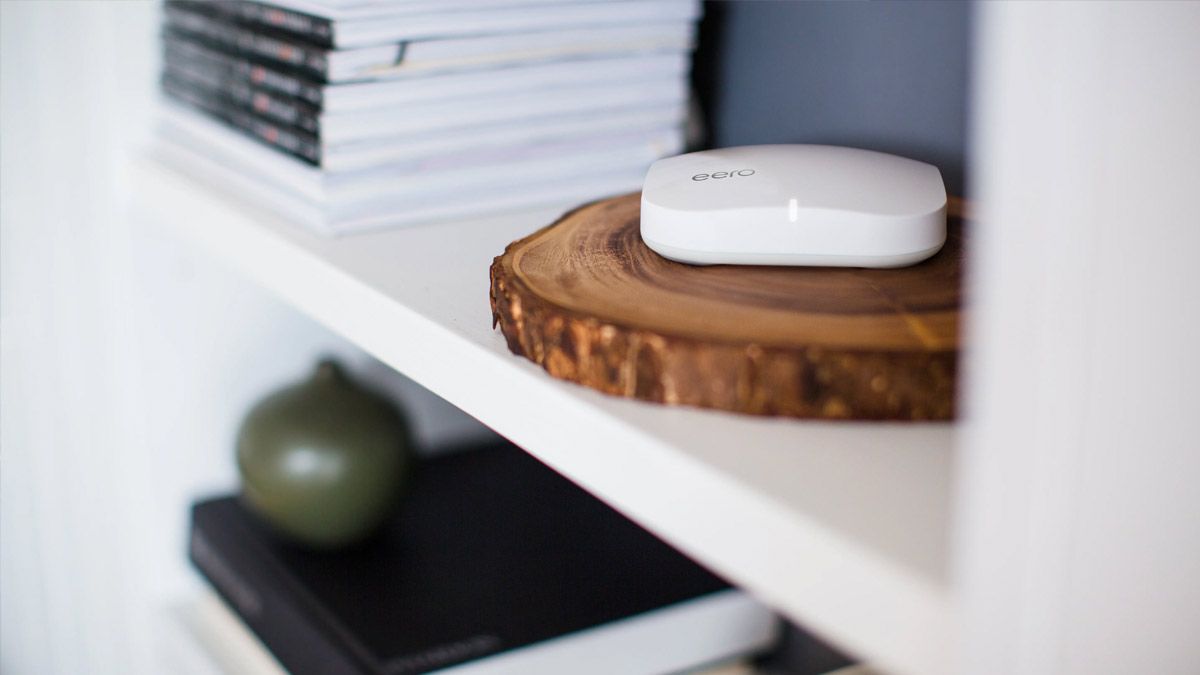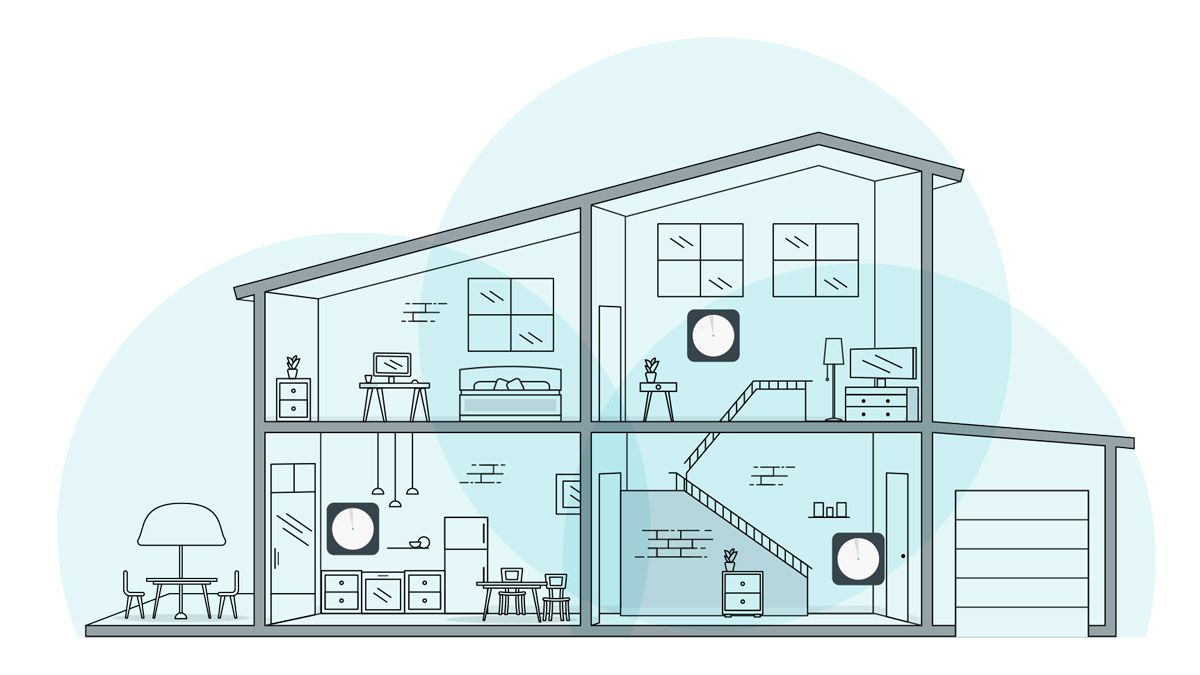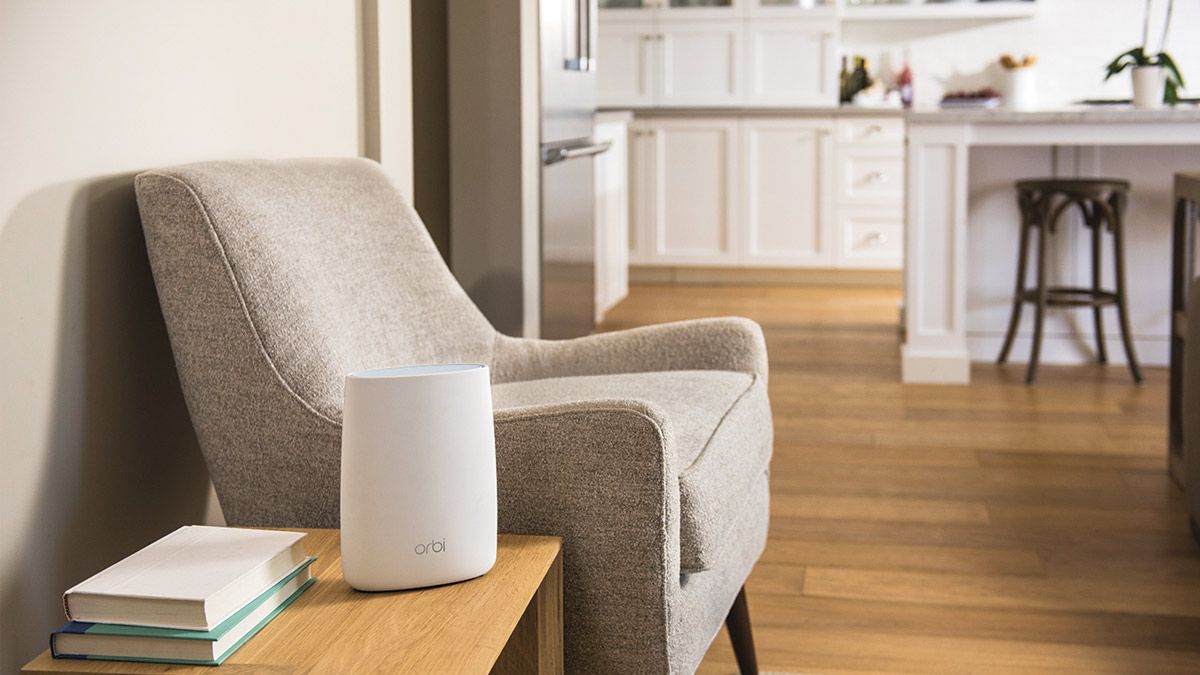Quick Links
Purchasing a mesh router system is only half of the upgrade process. If your mesh node placement is poor, you'll never realize the full benefits of a mesh system. Here are common mistakes you want to avoid.
Placing Your Mesh Router in the Same Old Location
When you buy a new mesh router system, it's a perfect time to reassess the placement of your router.
Far too many people have their traditional Wi-Fi router parked in some out-of-the-way location. This location is usually dictated by where the utility line from their internet service provider (ISP) enters their home.
The most common locations we come across are in living rooms where the original cable service entrance was or in basement corners where the old telephone service enters the home.
While mesh systems are quite helpful for bandaging a situation like the router being shoved in a basement corner, it's not ideal.
Now, while you're setting up a new system, is a great time to consider moving your router to improve Wi-Fi coverage.
Just because your router has always been in a particular corner doesn't mean it has to stay there. Moving your mesh router to a central location in your home will make it easier to effectively place the other nodes and get better whole-house coverage.
Placing the Nodes Too Close Together
It might seem counter-intuitive, but you can place mesh nodes too close together. Hardware, both at the router level and at the device level, like your smartphone, is improving all the time but putting nodes close together creates an unnecessary burden on both the mesh system and the devices connecting to it.
You don't want to create radio congestion by putting nodes too close together and you don't want your devices to have to constantly reassess which node to use because it's unclear which offers the superior connection at a given moment.
It's a bit tricky to assess too close together. Obviously, you don't want two nodes in the same small room or right on opposite sides of a wall, but both the layout of your home and the material it is constructed with play a role in determining node proximity.
Placing the Nodes Too Far Apart
You would think it would be immediately obvious if you had placed your nodes too far apart. Wi-Fi isn't like a simple toggle where it is either on and working or off and not, however. There isn't a cut and dry "at X number of feet from Y router, the signal doesn't work," rule.
Instead, the signal degrades over a given span of time influenced by not just the distance but everything in between the mesh node and its nearest node neighbor.
Ideal node placement is where each node covers a maximum amount of area in the house with just enough overlap between one node and the nearest node so the two units can communicate with minimal interference and a strong signal.
What that looks like in your home is highly dependent on many of the other factors in this list like where the main mesh router is placed and the configuration and construction of your home.
In general, however, a good guideline is to place the node roughly halfway between the mesh router and the area of your home where you get a really weak signal. The goal is for the node to pick up the signal from the router and carry it forward, not to have to be so far away it strains to connect properly.
If the nodes are too far apart, devices in the semi-dead spots between them will have slow load times, stuttering, and other connectivity issues. That's a good sign you need to move one or more of the nodes (or add another one to the system).
In the diagram above, you can see how strategically placing mesh nodes (in this case TP-Link M9 mesh nodes) covers the garage, patio, and central structure of the house.
Placing the Nodes Against Outside Walls
Speaking of placing mesh nodes too far apart, one common mistake we come across far too frequently is router placement (mesh network or otherwise) against an outside wall.
Wi-Fi radiates out of the router or mesh node in a fairly uniform shape (the shape depends on the type of antenna, but most units don't have highly focused directional antennas so it's shaped like a fairly balanced donut, dome, sphere, or such). If you park your mesh node against an outside wall then a significant amount of the signal is going to radiate out into your yard or a neighboring apartment.
If you actually want that coverage, such as pushing your Wi-Fi signal out to a patio where you spend a lot of time, that's fine. But if the mesh node is hugging an outside wall that borders a space you don't use, then you should reposition your mesh node so the signal is better aligned with the spaces you do use.
Placing the Nodes Behind Radio-Absorbing Materials
You can go a long way towards improving the placement of mesh nodes if you think about your home in terms of what materials exist between one node and the next.
Pretend for a moment that you're Superman and you can gaze through floors and walls, seeing everything between where you plan to place the main mesh router and where you'll place the nodes. What is between the node and the base if you draw a line through the air and the intermediate structures of the home?
There are some materials that absorb so little Wi-Fi signal they might as well be open air. Windows are practically invisible unless they are tinted with metallic film. Drywall interior walls with wood studs absorb a little but not too much.
Stuff like refrigerators and other large appliances, cast iron bathtubs (and metal plumbing in general like big cast iron drain stacks), concrete walls, old plaster walls with metal lathe, steel studs, and anything else with metal and/or high-density composition absorbs a lot of Wi-Fi energy.
That includes, by the way, books. You might not have given much thought to a large bookcase or an entire wall lined with books, but you should keep it in mind. While a single book isn't going to do much to block a Wi-Fi signal, hundreds of them stacked together absorb quite a bit of energy.
With that in mind, try to place your mesh nodes where you can draw an imagined line, free from any "heavy" obstacles (whether they are visible or hidden in the walls) between the node, other nodes, and the router.
Sometimes simply moving a mesh node from one corner of a room to another is sufficient to help the signal sneak past all the metal appliances in the kitchen or get a direct "line of sight" through the floor without running into your antique tub.
Placing the Nodes Too Low
Although this mistake could technically be included with the prior tip talking about not parking your mesh nodes behind radio-absorbing materials, it's notable enough to break out and discuss on its own.
All too often people place their mesh nodes in locations that are too low for optimal signal dispersion. The density of any given room in your home is heavily weighted towards the floor. Furniture sits on the floor. All the objects in the furniture (like books, decorations, etc.) are closer to the floor. Our bodies block Wi-Fi to a certain degree, too, by the way, and we're also walking around and living our lives in the lower half of the room.
There's a reason when you're in a location with a large corporate Wi-Fi network like an office, college, or any other similar place the Wi-Fi access points are up high. While part of the placement is the ease of deployment, a big part is that putting the access points above the users ensures that all the bodies and furniture in the space don't block the signal.
You can take a cue from those environments and move your mesh nodes as high up as practical (or acceptable to your interior design sensibilities) in your own home. Moving your mesh nodes from table height to ceiling height gets them above all the stuff in the room that blocks their signal.
It's worth noting that the majority of consumer mesh systems on the market are designed for horizontal surface placement. The antennas inside the node are positioned as if you're going to set the node on a table, shelf, or other horizontal surface such that the radio signal radiates out around the unit with a slightly weaker signal profile beneath the unit.
Under real-world conditions the difference between, say, an Eero or Nest Wi-Fi node sitting flat or oriented 90 degrees in a wall mount bracket is negligible but the signal will be, objectively, stronger on the "top" of the unit.
With that in mind, if you do wall mount the unit it's worth keeping it horizontal or selecting the wall for vertical mounting such that the "top" of the unit points inwards towards the most important areas of the house and not out into your yard. Again, though, under real-world playing around on your phone or streaming video to your TV conditions, you'd be hard-pressed to notice a difference between the two orientations.
Wrapping up the list of mesh placement mistakes here is a perfect time to emphasize practical placement over optimal placement. We don't want anyone reading over this list of tips and thinking they have to go change everything about their mesh network layout.
Before moving everything around look for easy wins like simply putting the mesh node on top of the bookcase instead of buried in between the books on the shelf or changing which corner of the room a node is in so it can communicate in a straight line to another node without the stove and fridge in the way.



